Tea …. that essentially British drink …. or? Actually the real history of tea is a Japanese (and Chinese) history – we just came along later and exploited it! Tea was grown in China, but quickly made its way through Zen Buddhist monks to Japan. The first documented evidence of tea in Japan comes from the 9th century and relates to a Buddhist monk serving tea to a Japanese emperor. The tea ceremony, or more correctly – sadō/chadō (The Way of Tea) – still retains religious overtones, but these are perhaps over-stated in Western circles as the way of tea refers to the process of tea being served in a wide variety of contexts. It may be served to friends, relations, business associates or family and the reasons may be friendship, apologies or simply serving tea as a mark of respect to people. It can even be a part of wedding ceremonies, though this is not that common in Japan. Nevertheless, Zen Buddhism was a primary influence in the development of the culture around serving tea.
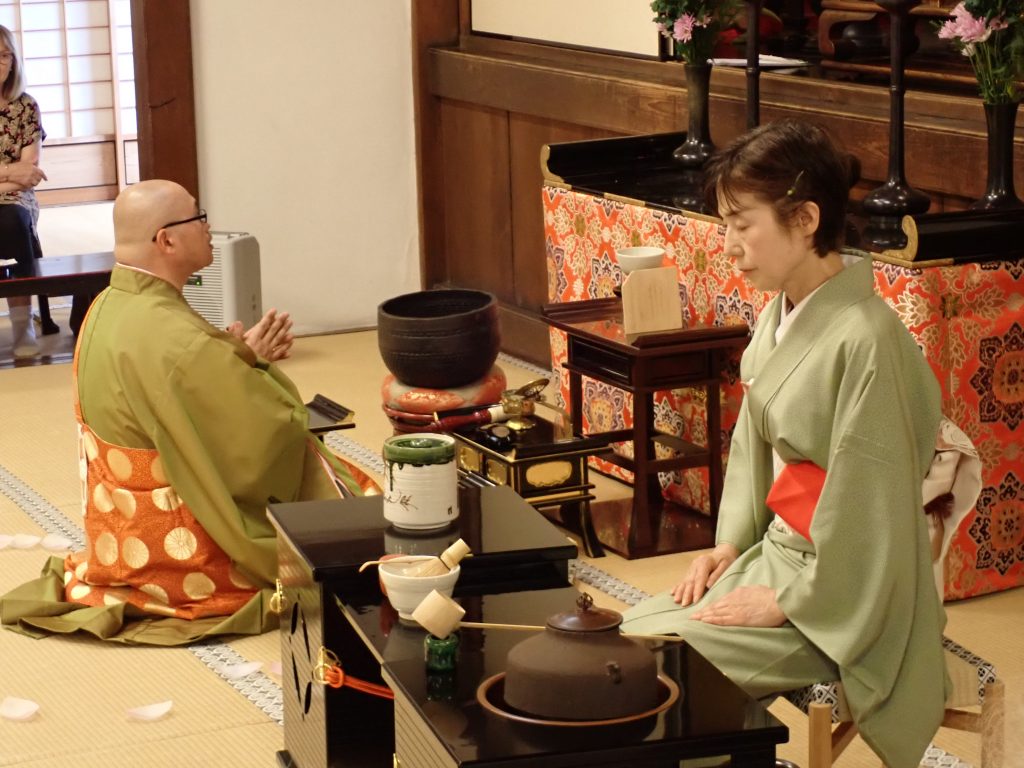
The tea is always powdered green tea – known as matcha and it is mixed with hot water and then carefully whisked with a tea whisk (called a Chasen and carved from a single piece of bamboo) to make it frothy and draw out the flavour. All this is done in a very precise and unhurried way. For our tea ceremony the Buddhist elements were combined with a monk chanting and praying both before and while the tea was prepared. Once served the bowl is then turned clockwise two half turns to ensure that you are not drinking from the front of the bowl and it can then be cleaned and passed to the next guest. This part didn’t happen with us – perhaps the tour risk assessment thought that was one step too far! Slurping is encouraged as this shows enjoyment and respect for the tea master. We were also given a sweet rice biscuit which we had to eat before we started drinking the tea.
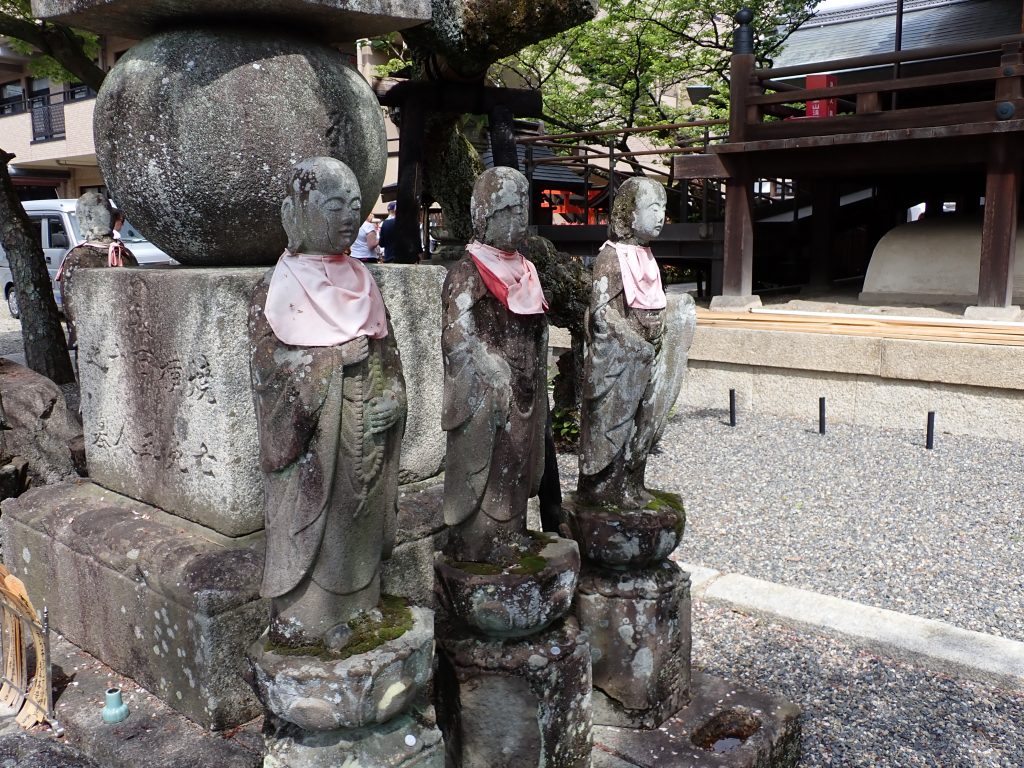
The next stop was the Kinkaku-ji Buddhist temple. This is also known as the Temple of the Golden Pavilion and the clue is in the title – it is covered in gold leaf. The history dates back to 1397 but its history is slightly fraught. Wooden buildings and fire are unwelcome stable mates, but accidents happen and in the 15th century the buildings all burned down. They were rebuilt, but the next dalliance with fire came in 1950 when a novice monk burned the temple down. It is unclear why he did, but mental illness seems to have been the trigger – it is suggested that he was overwhelmed by the beauty of the building. He then attempted suicide on the Daimon-ji hill behind the building, but survived, and was arrested and sentenced to seven years in prison. He never served all those years as he was released on the grounds of mental illnesses. He subsequently died of tuberculosis in March 1956. The building was completely rebuilt in 1955 and covered once again in gold leaf, though various restorations have taken place since.
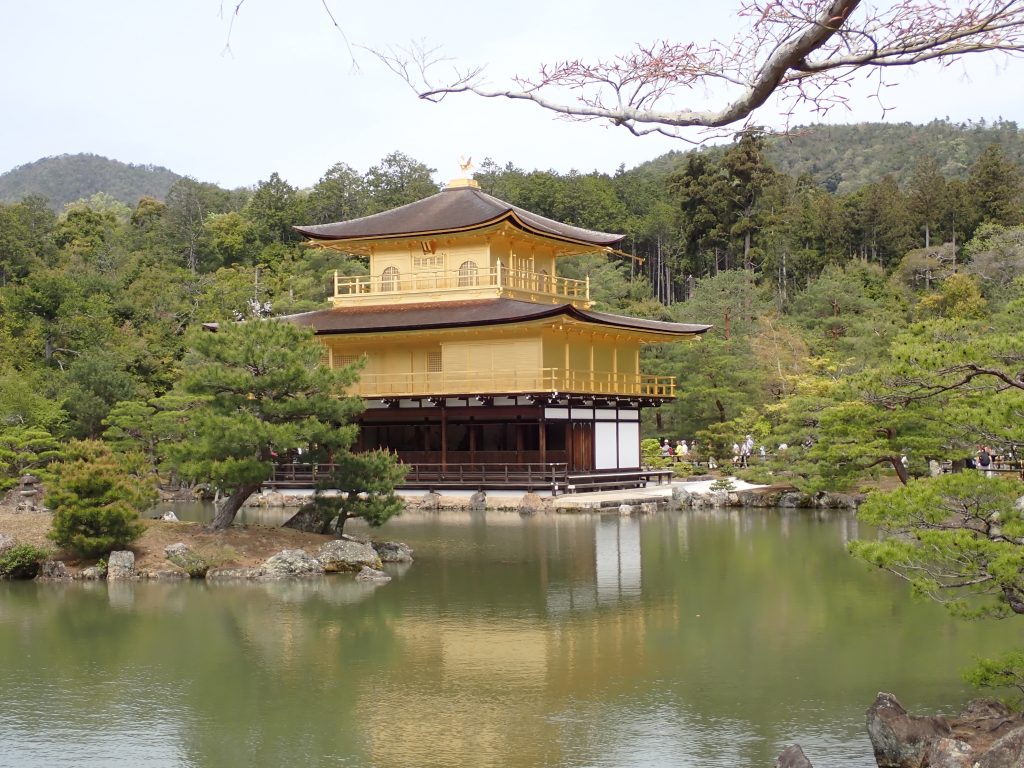
It is a very beautiful building and its location on a pond filled with lilies and irises lends it a slightly surreal quality, though the hordes of tourists seeking their Instagram can colour this impression somewhat!
The next visit to the Ryoanji Temple restored this Zen peace and serenity. The guide initially just told us that the temple had a rock garden, so we had visions of an artistic pile of rocks with beautiful alpines and other plants draped over the rocks and bursting with colour in spring. The reality was slightly different to this. It turns out that a Japanese rock garden is a garden of rocks with shingle in between the rocks. However, it is not just any old shingle. The shingle reflects the uniformity and homogeneity of the garden and is raked to within an inch of its life. Not a stone is unturned or out of place. To retain this orderliness, the shingle is apparently raked by the monks every morning. It brings a new meaning to ‘gardening’.
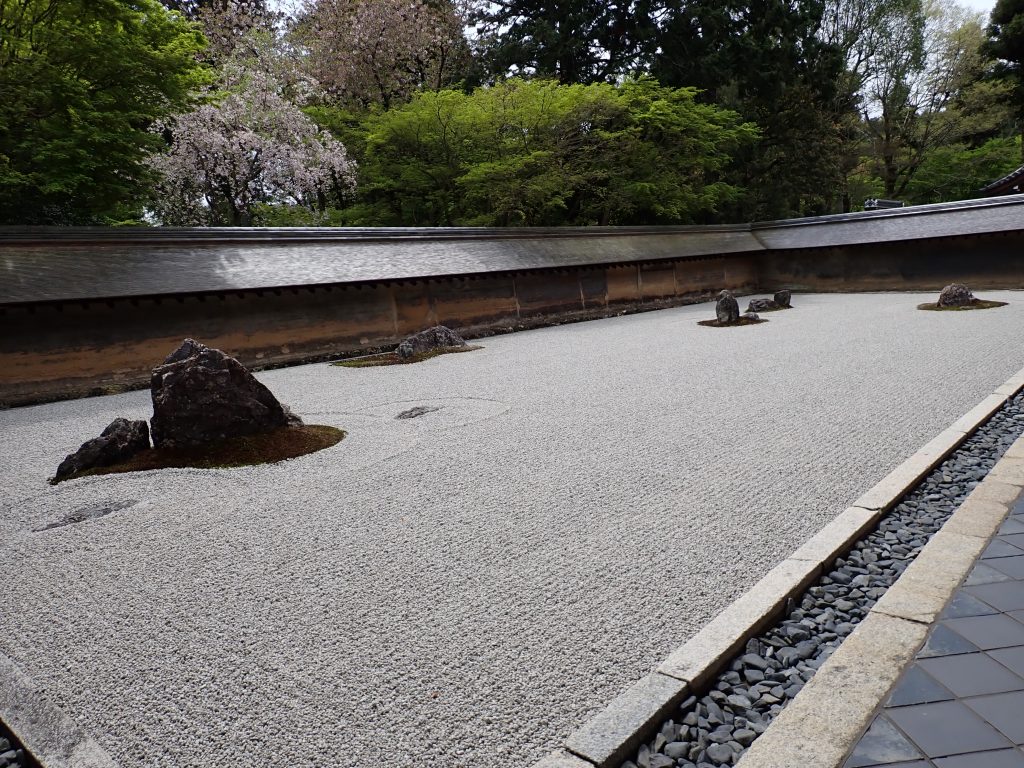
The remainder of the garden around the temple was beautiful with various spring flowers bursting into life – magnolias and azaleas among others. A walk around engendered a sense of peace and orderliness – a feeling that all was right with the world. The presence of terrapins on the lake just seemed appropriate to the slow and unhurried pace promulgated by the garden.
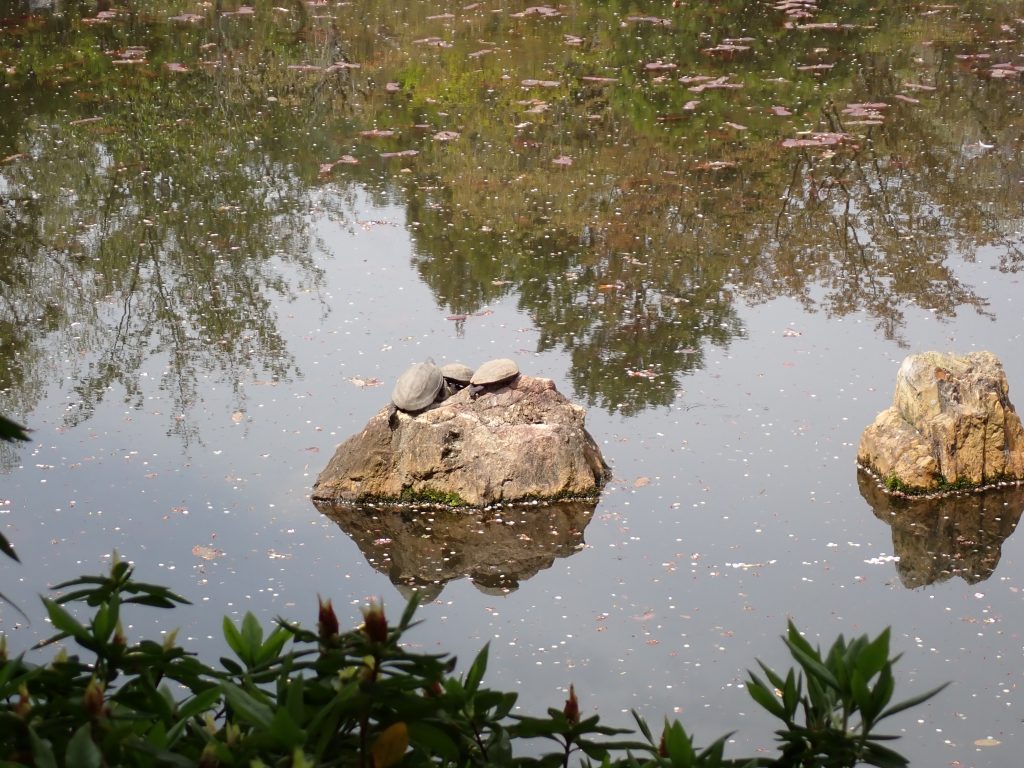
The afternoon was a total contrast – a visit to the Kyoto Railway Museum. With various steam trains and early bullet trains, it was an interesting visit, though I did struggle to occupy the rather generous two hours we were given there. The last hour of the visit felt more like the feeling you get waiting for a British train to finally arrive. Definitely not a Zen peacefulness that the earlier visit gave ….


Leave a Reply